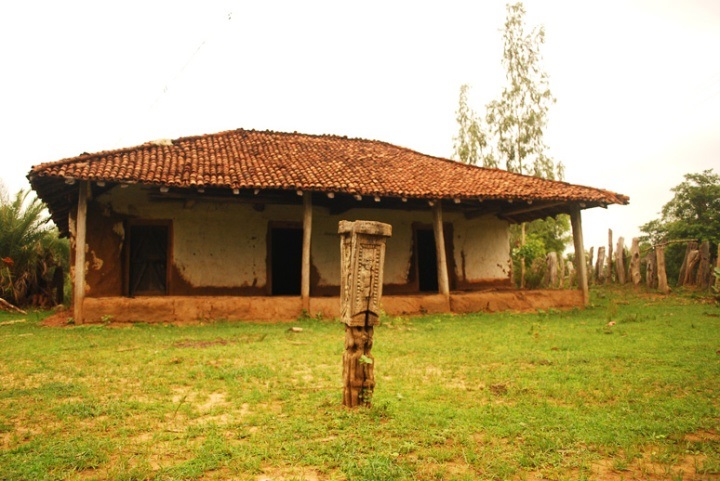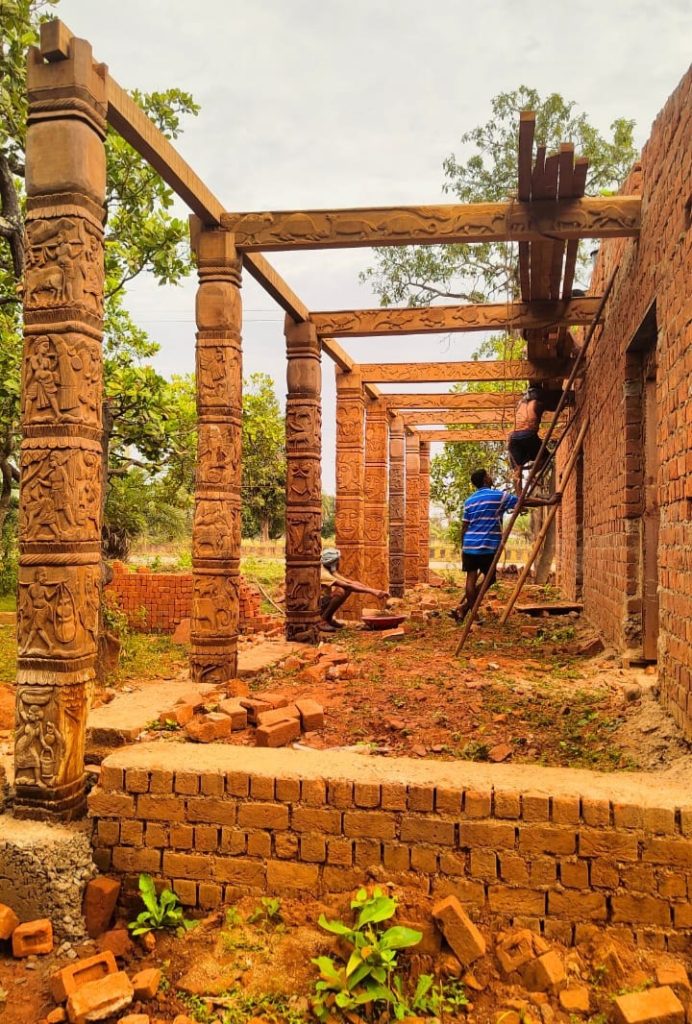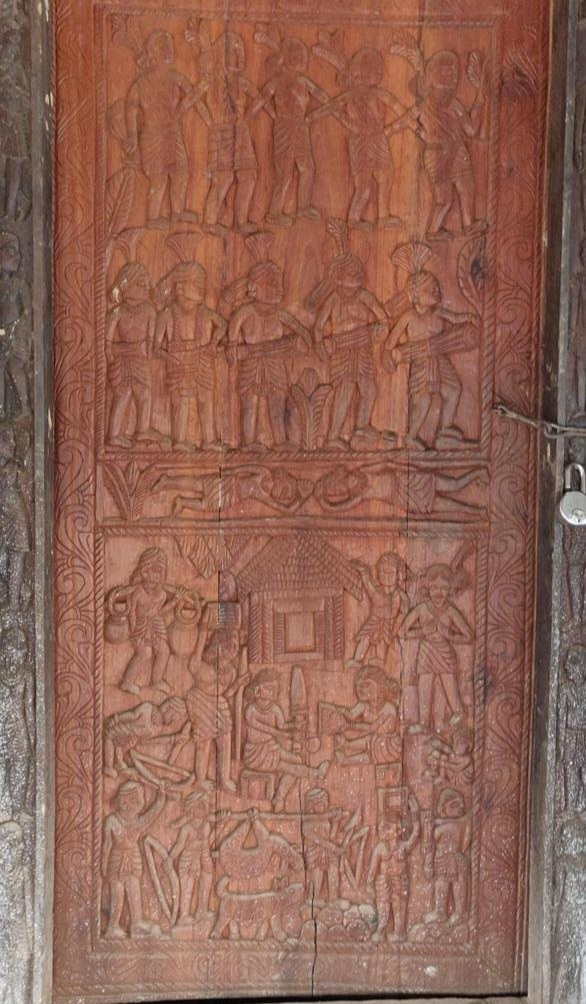As schools have come up even in remote villages, tribal youths, who used to visit gotuls (youth dormitories) during evenings, are now skipping them. A report by Deepanwita Gita Niyogi

Gotuls, traditional tribal youth dormitories once extensively found in several villages of Narayanpur and Kondagaon districts in Chhattisgarh, are on the decline. There are several reasons behind the disappearance of gotuls.
While the modern school education system is primarily to be blamed for the decline in the popularity of gotuls where songs and dances were the order of the day, according to a few sources, the protracted battle between security forces and insurgents is also responsible to an extent.
With the dominance of schools even in interior villages, tribal youths, who used to visit gotuls during evenings, are now giving them a miss. Many are opting for college education in cities and becoming detached from their culture. Adolescents, especially those above 15 years, used to maintain gotuls, along with elderly people.
Famous wood carver and painter Pandiram Mandavi is a resident of Garh Bengal village in Narayanpur where a few gotuls still exist. He belongs to the Muria tribal community. “Sometimes, when a village is big, there are more than one gotul. Now, many of them have almost closed down. In my youth, I had been to gotuls. I used to go in the evening after having my meal. The tradition continued for eight years and during this time I learnt how to sing and dance. But when people of my community started school education, gotuls ceased to exist,” Mandavi said.
Reviving gotuls
Today, a few gotuls still exist in the district. Sensing the disintegration of the gotul culture, a few years back, the state government had ordered the renovation of old gotuls and the construction of new ones to keep this unique tradition alive. Work towards this also happened in some tribal villages.
In many tribal villages of Chhattisgarh, development is taking place at a rapid pace. Though a positive change, it is making tribal communities alienated from nature on which they depend for economic, social and cultural sustenance. Even today, some tribal dance forms are practised inside forests. People’s cultural practices are linked to the environment. Protecting gotuls can safeguard the tribal way of life at a time when environmental degradation is on the rise.

In Mandavi’s village Garh Bengal, the forest department is funding the construction of a new gotul. Right now, it is not yet complete and will take a few more months. According to the department, local residents are involved in the work based on old gotul models. The fund amounts to about Rs 20 lakh. Garh Bengal is famous for Chendru Mandavi, who is known as Bastar’s tiger boy.
Individuals and organisations have also taken active interest in the revival of gotuls. Jeet Arya of Bastar-based travel start-up Unexplored Bastar, said that his company worked on a gotul project in the past. “My guides take tourists to gotuls. The start-up is now working on one gotul in Kondagaon and another in Narayanpur.” Describing his experience, Arya said that the location of a defunct gotul was identified in Narayanpur. It was then revived with the help of the community. Clothes and jewellery were also introduced in it.
Old gotuls used to be constructed with mud and wood. However, the new ones look more like bhawans in concrete and perhaps erected, keeping in mind the need for space for meetings and other social purposes.
According to Bangaram Sori, while work is complete at some sites, it remains pending in others. “Gotuls must be maintained according to the tribal culture,” said Sori, who heads the Sarva Adivasi Samaj.
Tribal cultural identity
In Garh Bengal village, local leader Rupsai Salam is assisting in the process of the gotul construction. “Earlier, the people themselves constructed the gotuls. I started going to gotul at the age of 12 and continued the practice till I was 25.”Apart from being a politician, Salam is also an artist and a farmer.
An important part of the tribal cultural identity, especially that of the Muria tribe, apart from adolescents, even children under the age of 10 used to go to gotuls. Narayanpur has the maximum number of gotuls.
Manish Panigrahi, who works for Unexplored Bastar, said that apart from modernisation, which impacted the gotul culture, non-tribals also did not pay adequate respect.
Chherku Netam, a resident of Kondagaon, blamed anti-social elements for dismantling and damaging gotuls. “People belonging to other cultures did not want our gotuls to flourish as they viewed them in a different light. This happened mostly in the 80s and 90s. But conscious Adivasis tried to construct gotuls again.”
Netam, the block president of Kondagaon’s Pharasgaon, belongs to the Gond Samaj where the focus is on the promotion of the Gondi language and culture. The Muria tribe is a sub-group of the Gond. “Youths still gather in gotuls which are considered centres of learning. Those who were in charge of gotuls lived together in deep forest areas. Discipline was foremost in gotuls and punishment meted out for delinquency,” Netam said.

Though the word gotul is linked to the Muria and the Abujhmadia tribes of Chhattisgarh, the Dhurwa tribe too has same concept, explained B Bindu, who runs her travel start-up, Culture Devi. Just like the gotul, the Dhurwas have the gurgal. When Bindu takes visitors to the anthropological museum situated in Bastar district, she talks about gotuls.
Baliram Nag, who works for the Chhattisgarh State Renewable Energy Development Agency, recalled his experience of attending perhaps a gurgal as a youth.
According to Abhay Minz, assistant professor of anthropology at Dr. Shyama Prasad Mukherjee University in Ranchi, the concept of the youth dormitory was a strong structure of socialisation among tribals. In Dhumkudiya (youth dormitory developed on the basis of age and gender), the youth used to learn about their religious tradition, indigenous knowledge and oral history, apart from songs and dances. “Here, they were prepared for life’s challenges. They received sex education and an opportunity to choose the right life partner.”













